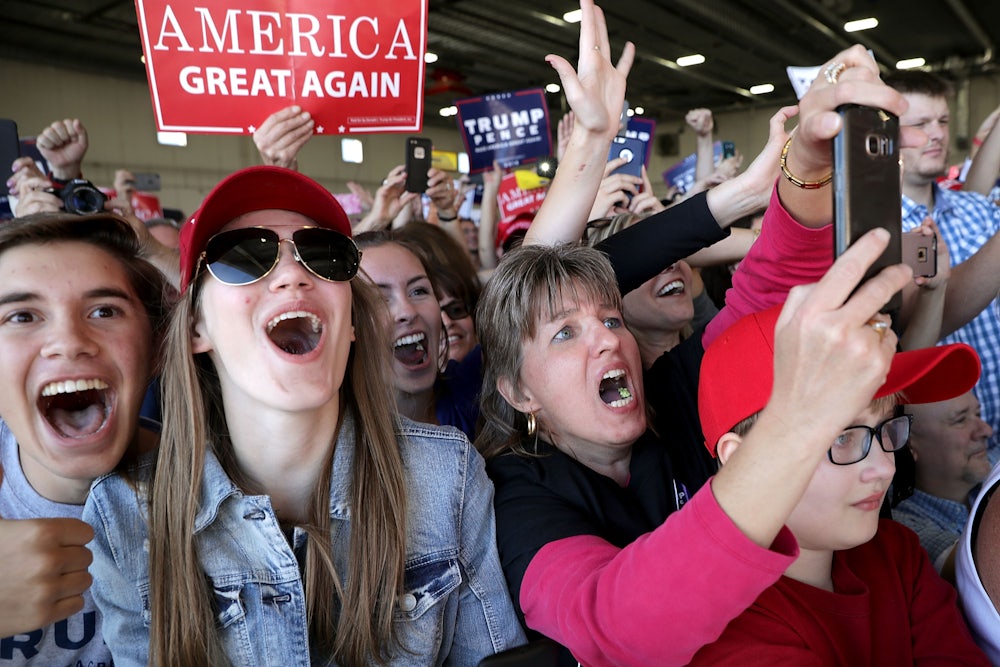The autopsies of Hillary Clinton’s loss in last week’s election keep pouring in, and the cause of death is nearly unanimous: The white, rural, working class voter did it.
Townhall’s Matt Vespa called it “the revenge of the white working class,” Politico the “Revenge of the rural voter.” Clinton, according to CNN contributor and historian Stephanie Coontz, “was simply unable to present herself as a forceful defender of everyone who has been left behind by the march of globalization, professionalization and the emergence of a new just-in-time, winner-take-all economy.” And Cracked’s David Wong, in an article with nearly ten million views, explains why rural voters came out so strongly for Trump: “To those ignored, suffering people, Donald Trump is a brick chucked through the window of the elites. ‘Are you assholes listening now?’”
It’s true that the white working class was instrumental in delivering Trump the White House. In the Rust Belt states of Pennsylvania, Michigan, and Wisconsin, Clinton underperformed Barack Obama among white working class voters, and this cost her the electoral college. Had about 100,000 of these voters across the three states voted for her instead of Trump, she would be president–elect now, instead of sitting on a possible two-million vote Pyrrhic popular vote victory.
The failure to engage the white working class has been described as a grave tactical error, and that may well be true, given the slim margin of victory in swing states. But the media’s obsessive focus on this voting bloc would leave you to believe that Trump’s voters largely live in areas hit by the decline in manufacturing, are suffering from economic anxiety, and turned out last Tuesday to voice their disdain for smug urban elitists. But this narrative paints a misleading picture of the typical Trump voter, and by doing so, lets off the hook an entire class of voters who are at least as responsible for Trump’s victory: middle-class and wealthy suburban whites, who also came out in droves for Trump and who make up a larger part of his coalition.
The average Trump voter is not poorly educated or unemployed, nor does he live in a rural area. Back in May, FiveThirtyEight’s Nate Silver punctured the myth of the “working class” being Trump’s voter base: In exit polls of 23 states from the primaries, all showed a higher median income for Trump supporters than the national average, usually around $70,000. Exit polls last week, while not definitive, reveal that both college-educated white men and college educated white women voted for Trump by much higher than expected margins.
While it is true that many rural voters who backed Obama in 2008 and 2012 voted for Trump this year, these voters hardly comprise the majority of Trump’s 60 million votes, as rural voters made up only 17 percent of this year’s electorate. Most rural voters generally vote Republican anyway. Clinton’s decision not to target these voters may seem foolhardy in hindsight, but these voters have not been a key Democratic demographic for many decades. Moreover, as a longtime member of the Washington establishment, Clinton was always going to be a hard sell to these voters in a change election.
The voters Clinton really lost—the ones she was targeting and relying on for victory—were college-educated whites. Most polling suggested she would win these voters, but she didn’t, according to exit polls: White men went 63 percent for Trump versus 31 percent for Clinton, and white women went 53-43 percent. Among college-educated whites, only 39 percent of men and 51 percent of women voted for Clinton.
Clinton’s strategy made sense. Trump’s negatives among this group, which normally leans Republican (Romney won them by six points), were pretty high in polling. What’s more, these people hadn’t suffered under Obama; they’d thrived. The kind of change Trump was espousing wasn’t supposed to connect with this group. A massive Gallup study in August revealed that the typical Trump supporter has “not been disproportionately affected by foreign trade or immigration. The results suggest that his supporters, on average, do not have lower incomes than other Americans, nor are they more likely to be unemployed.”
Perhaps, then, these Trump voters are the most deplorable of them all. They’re not suffering or desperate, and have no concrete reason to hate the status quo or to feel like they are in decline. They understand that Trump is manifestly unprepared to be president, have heard his many lies and insults, yet voted for him anyway. And without them, Trump wouldn’t have won. The media ought to focus on their motivations, too—and reporters won’t even have to fly to Youngstown to find them.
